20211325 2023-2024-1 《信息安全系统设计与实现(上)》第八周学习笔记
20211325 2023-2024-1 《信息安全系统设计与实现(上)》第八周学习笔记
一、任务要求
自学教材第5章,提交学习笔记(10分),评分标准如下:
1. 知识点归纳以及自己最有收获的内容,选择至少2个知识点利用chatgpt等工具进行苏格拉底挑战,并提交过程截图,提示过程参考下面内容 (4分) “我在学***X知识点,请你以苏格拉底的方式对我进行提问,一次一个问题” 核心是要求GPT:“请你以苏格拉底的方式对我进行提问” 然后GPT就会给你提问,如果不知道问题的答案,可以反问AI:“你的理解(回答)是什么?” 如果你觉得差不多了,可以先问问GPT:“针对我XXX知识点,我理解了吗?” GPT会给出它的判断,如果你也觉得自己想清楚了,可以最后问GPT:“我的回答结束了,请对我的回答进行评价总结”,让它帮你总结一下。
2. 问题与解决思路,遇到问题最先使用chatgpt等AI工具解决,并提供过程截图(3分)
3. 实践过程截图,代码链接(2分)
4. 其他(知识的结构化,知识的完整性等,提交markdown文档,使用openeuler系统等)(1分)
二、教材内容总结
2.1硬件定时器
定时器是由时钟源和可编程计数器组成的硬件设备。时钟源通常是一个晶体振荡器,会产生周期性电信号,以精确的频率驱动计数器。
硬件定时器能够按照一定的频率周期性的有规律的给CPU发送中断信号,发送中断的频率(周期)可以通过软件编程来设置,硬件定时器产生的中断信号可以称之为时钟中断。
2.2个人计算机定时器
- 实时时钟(RTC):RTC由一个小型备用电池供电。在所有类Unix系统中,时间变量是一个长整数,包含从1970年1月1日起经过的秒数。
time() returns the time as the number of seconds since the Epoch,1970-01-01 00:00:00 +0000 (UTC).
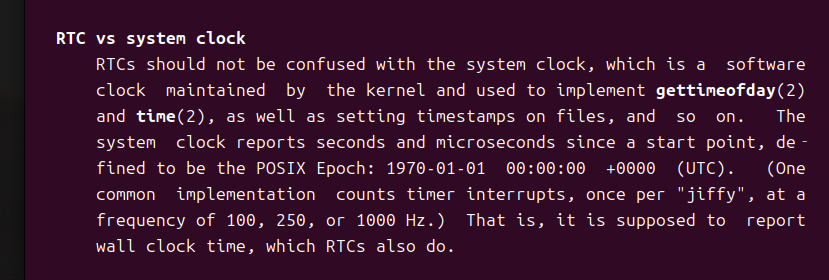
-
可编程间隔定时器(PIT)(Wang2015):PIT是与CPU分离的一个硬件定时器。可对它进行编程,以提供以毫秒为单位的定时器刻度。
-
多核CPU中的本地定时器(Intel1997;Wang2015):在多核CPU中,每个核都是一个独立的处理器,它有自已的本地定时器,由CPU时钟驱动。
-
高分辨率定时器:大多数电脑都有一个时间戳定时器(TSC),由系统时钟驱动。它的内容可通过64位TSC寄存器读取。
2.3CPU操作
每个CPU都有一个程序计数器(PC),也称为指令指针(IP),以及一个标志或状态寄存器(SR)、一个堆栈指针(SP)和几个通用寄存器,当 PC指向内存中要执行的下一条指令时,SR包含 CPU 的当前状态,如操作模式、中断掩码和条件码,SP指向当前堆栈栈顶。CPU操作可通过无限循环进行建模。
while (power-on){ 1. fetch instruction:load*PC as instruction,increment PC to point to the next instruction in memory; 2. decode instruction: interpret the instruction's operation code and generate operandis; 3. execute instruction: perform operation on operands,write results to memory if needed; execution may use the stack,implicitly change PC, etC. 4. check for pending interrupts; may handle interrupts; }
中断和异常处理都在操作系统内核中进行。大多数情况下,用户级程序无法访问他们。
2.4中断操作
书上讲的比较晦涩
中断是指在CPU正常运行期间,由于内外部事件或由程序预先安排的事件引起的CPU暂时停止正在运行的程序,转而为该内部或外部事件或预先安排的事件服务的程序中去,服务完毕后再返回去继续运行被暂时中断的程序。
从广义上讲,中断又可分为四类:中断、故障、陷阱、终止。


2.5时钟服务函数
- 在几乎所有的操作系统中,操作系统内核都会提供与时钟相关的各种服务。
linux系统中与时钟有关的系统调用:
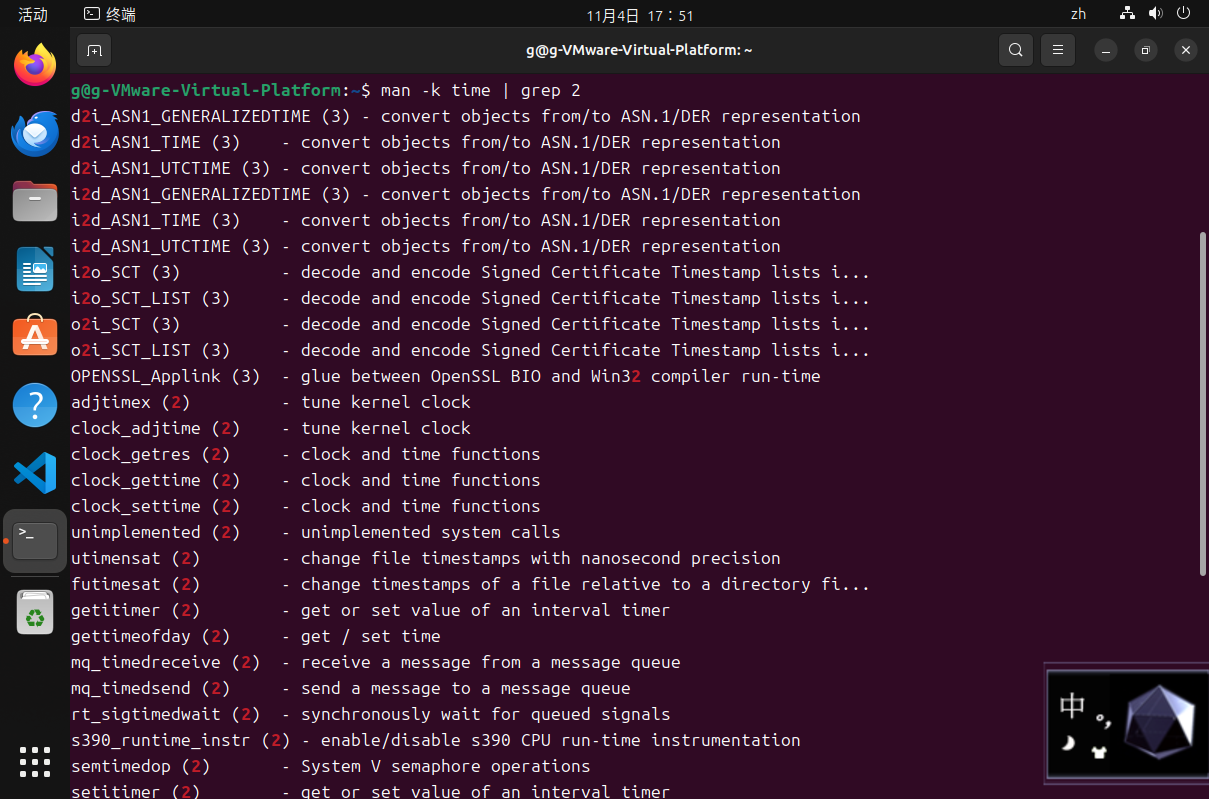
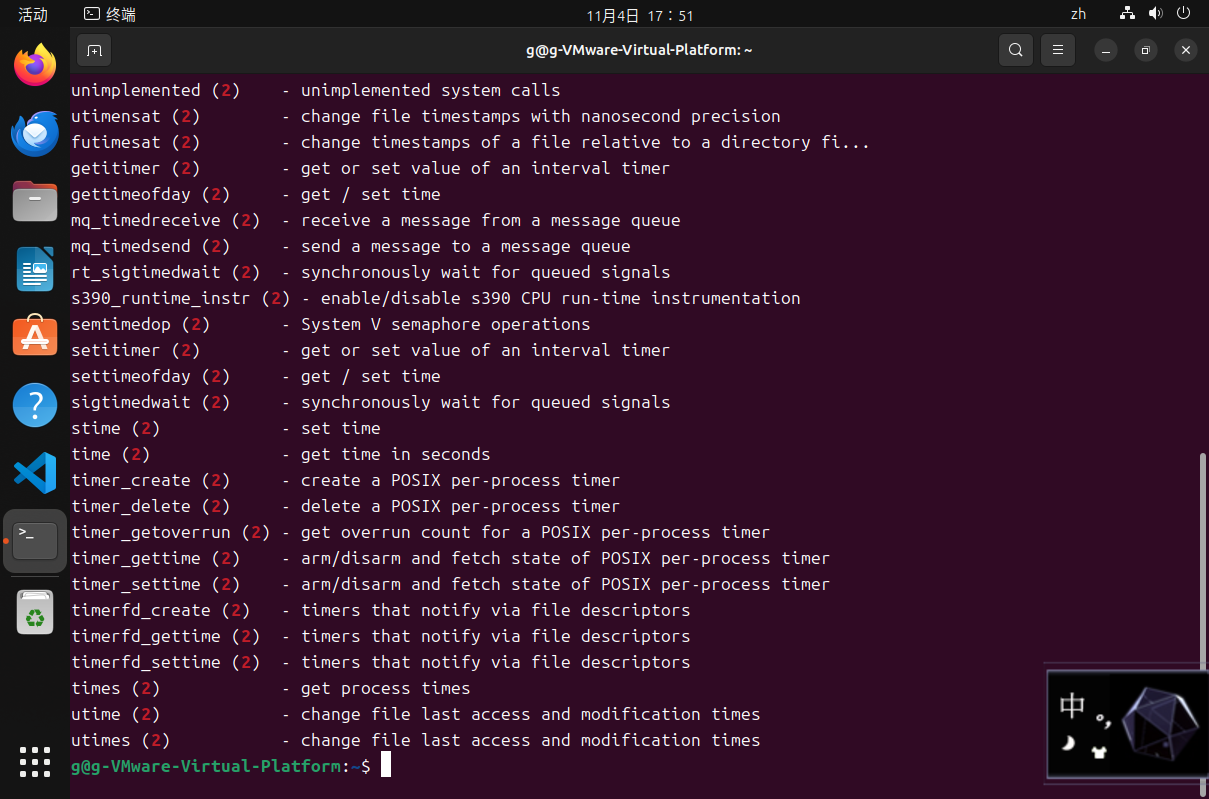
2.6gettimeofday&settimeofday
gettimeofday:
#include <stdio.h>
#include <stdlib.h>
#include <sys/time.h>
#include<time.h>
struct timeval t;
int main()
{
gettimeofday(&t,NULL);
printf("sec=%ld usec=%d\n", t.tv_sec, t.tv_usec);
printf("%s\n",ctime(&t.tv_sec));
}
编译运行:
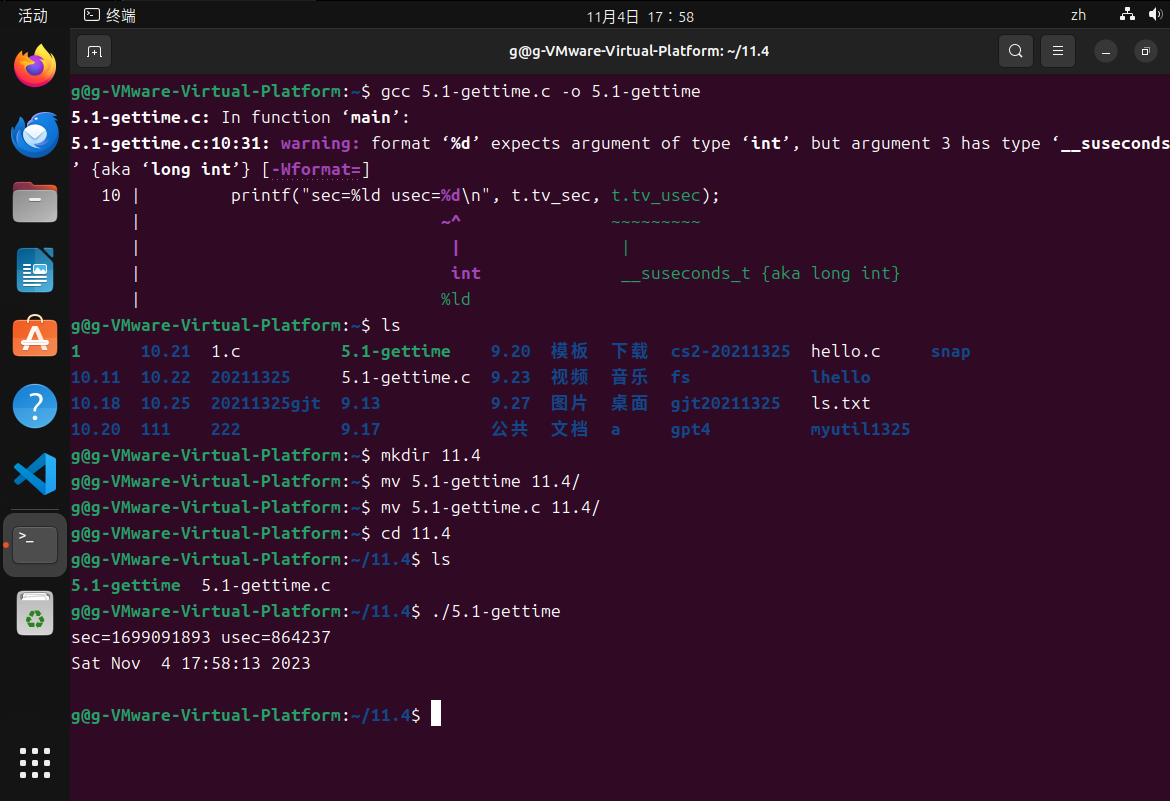
(其中代码中对于ctime函数调用缺少必要的头文件time.h
并且不需要强制类型转换为char* 。)
settimeofday:
#include <stdio.h> #include <stdlib.h> #include <sys/time.h> #include <time.h> struct timeval t; int main(){ int r; t.tv_sec = 123456789; t.tv_usec = 0; r = settimeofday(&t,NULL); if(!r){ printf("settimeofday() faild\n"); exit(1); } gettimeofday(&t,NULL); printf("sec=%ld usec=%ld\n",t.tv_sec,t.tv_usec); printf("%s",ctime(&t.tv_sec)); }
编译运行:
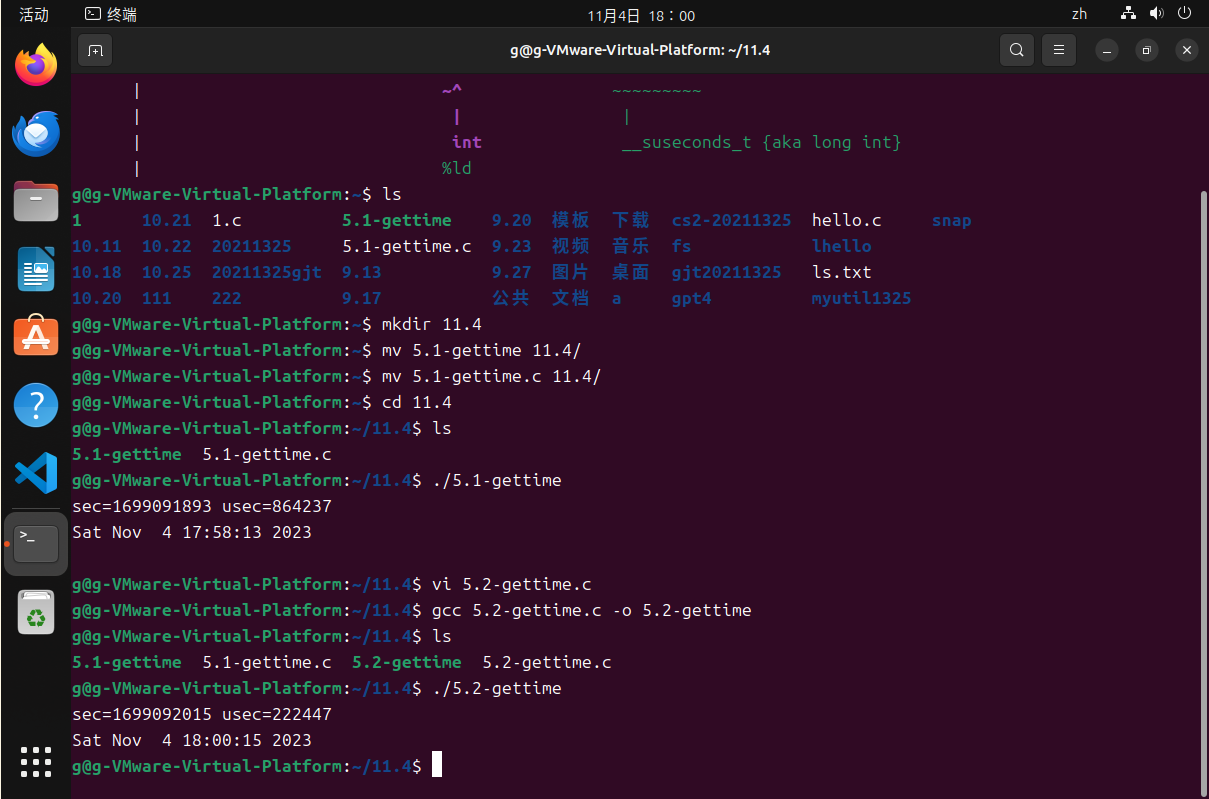
2.7time系统调用
#include<stdio.h> #include<stdio.h> #include<time.h> time_t start,end; int main(){ int i; start=time(NULL); printf("start=%ld\n",start); for(i=0;i<123456789;i++); end=time(NULL); printf("end =%ld time=%ld\n",end,end-start); }
编译运行:
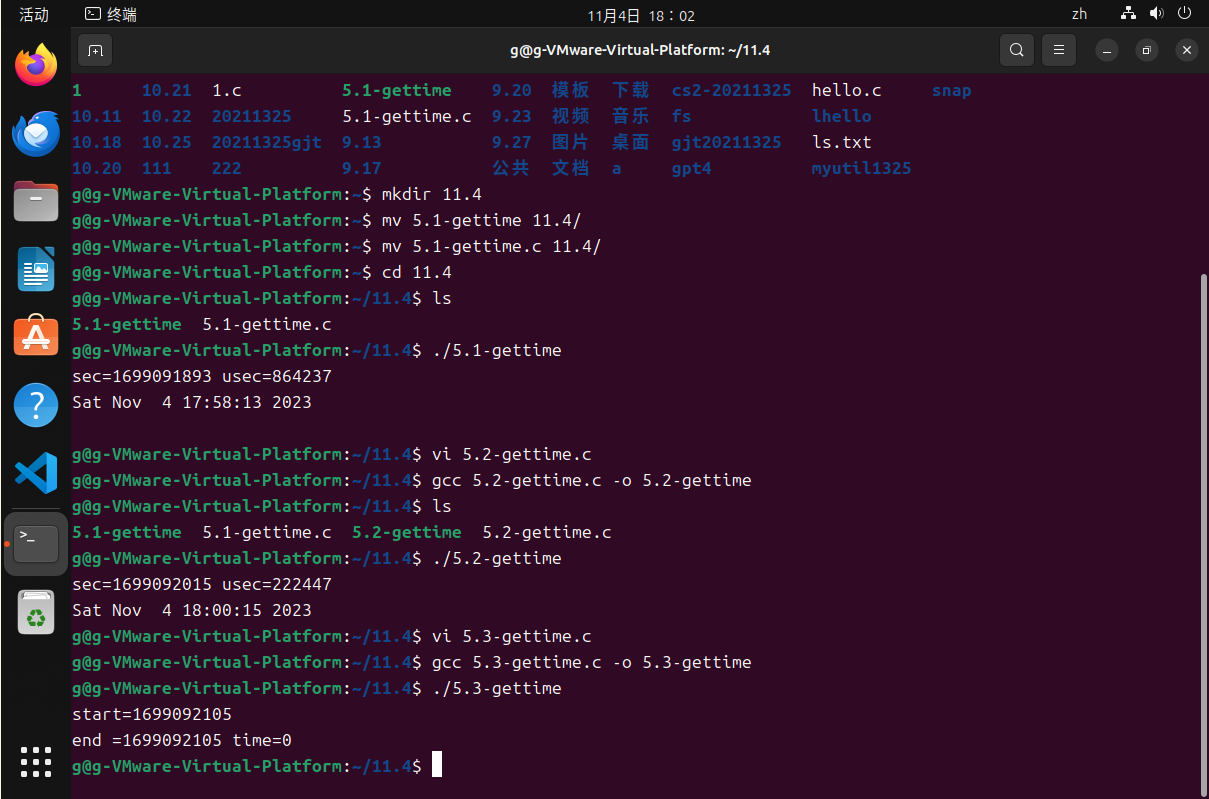
间隔定时器
#include <signal.h> #include <stdio.h> #include <sys/time.h> #include <time.h> int count = 0; struct itimerval t; time_t start,end ; void timer_handler(int sig){ end =time(NULL); printf("timer_handler : signal %d count=%d , diff: %ld \n",sig, ++count,end -start); start = end; if( count >= 8){ printf("cancel timer \n"); t.it_value.tv_sec = 0 ; t.it_value.tv_usec = 0; setitimer(ITIMER_VIRTUAL, &t , NULL); } } int main(){ struct itimerval timer ; signal (SIGVTALRM ,timer_handler); timer.it_value.tv_sec = 0; timer.it_value.tv_usec = 100000; //every 1s afterward timer.it_interval.tv_sec = 1; timer.it_interval.tv_usec = 0; // start a virtual itimer start = time(NULL); setitimer( ITIMER_VIRTUAL , &timer ,NULL ); printf("press Ctrl + C to terminate \n"); while(1); }
编译运行:
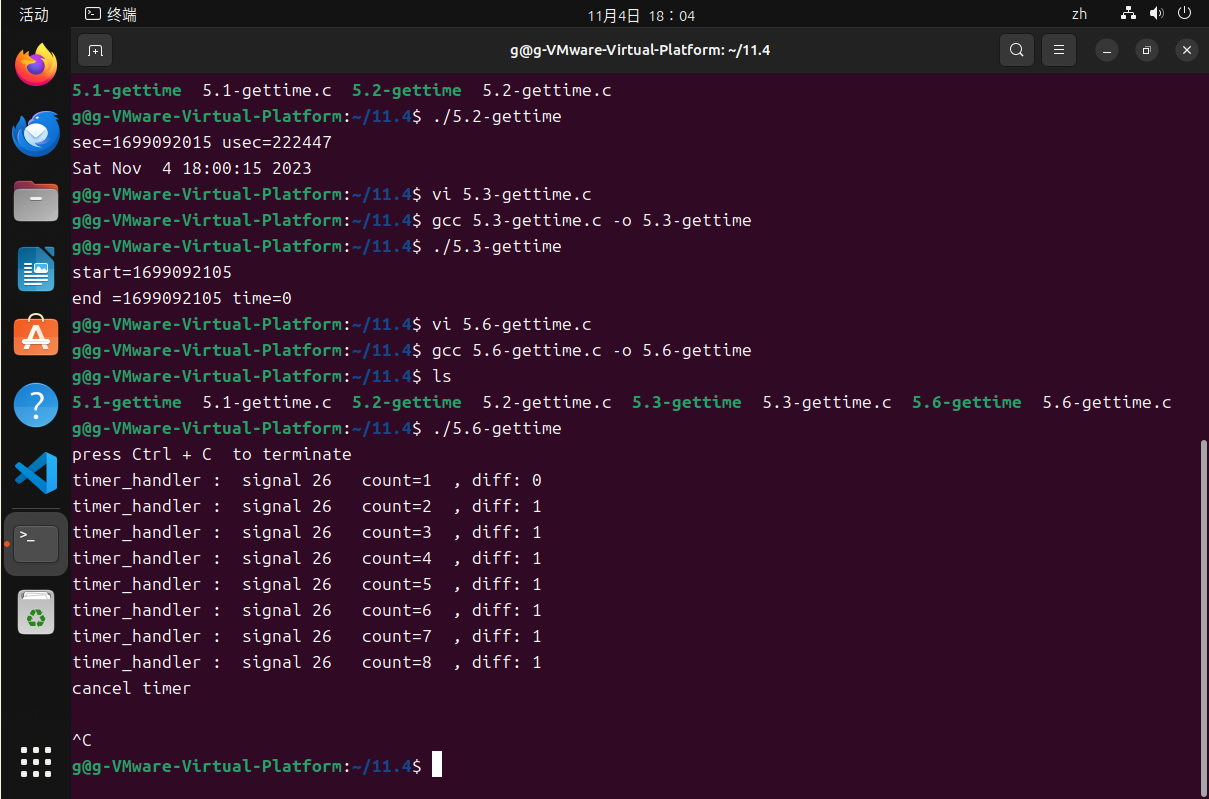
三、课堂代码实现
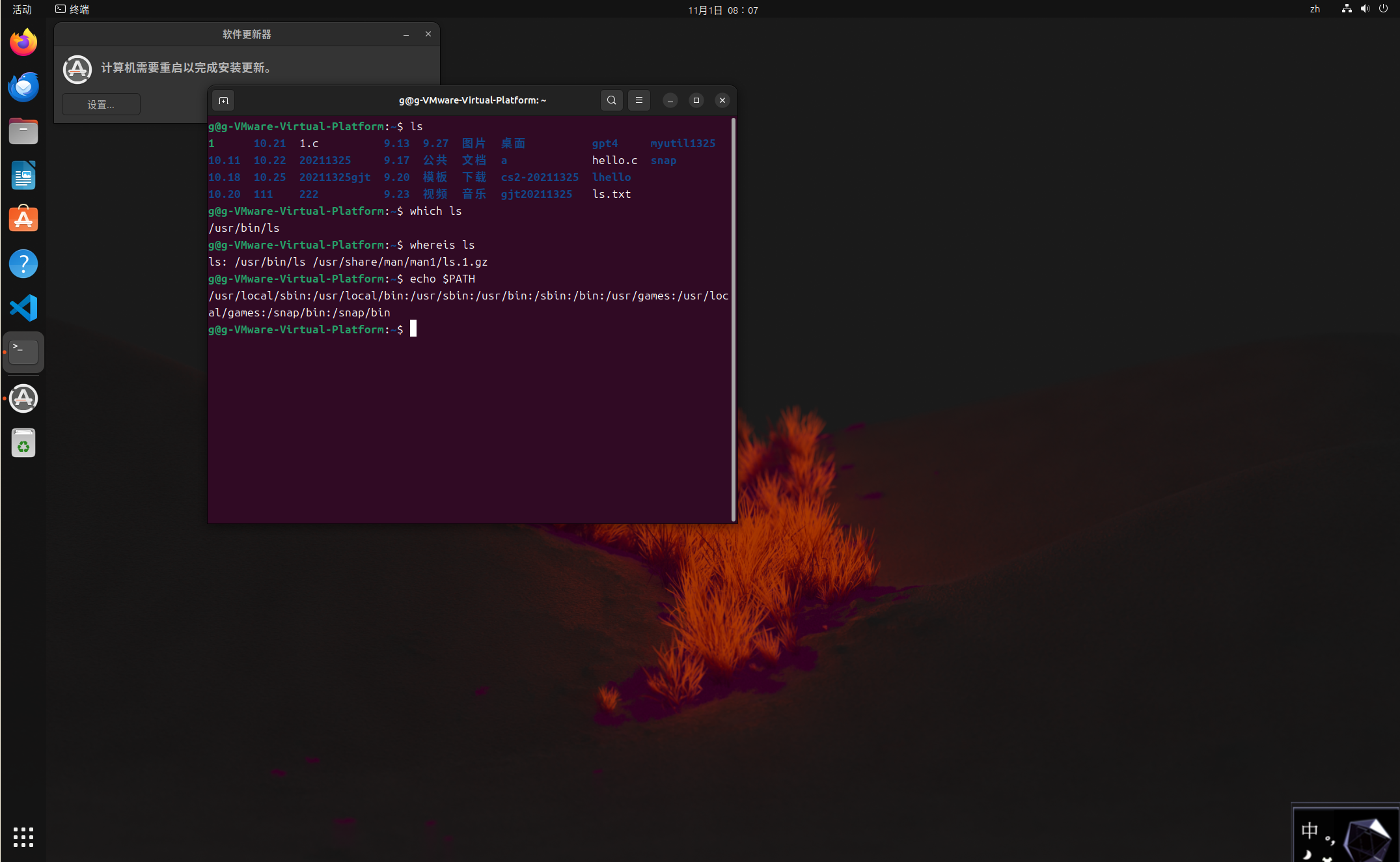
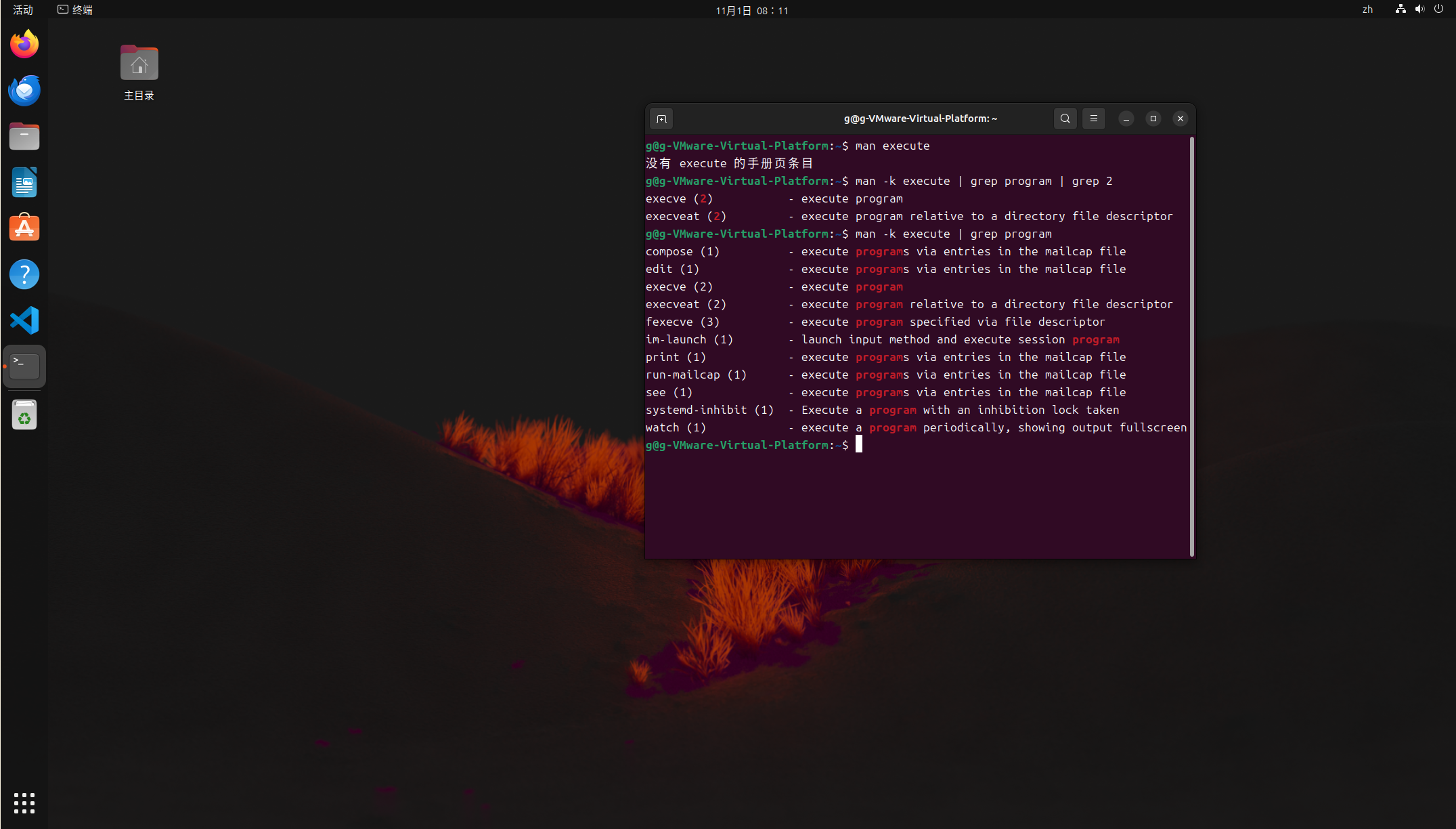
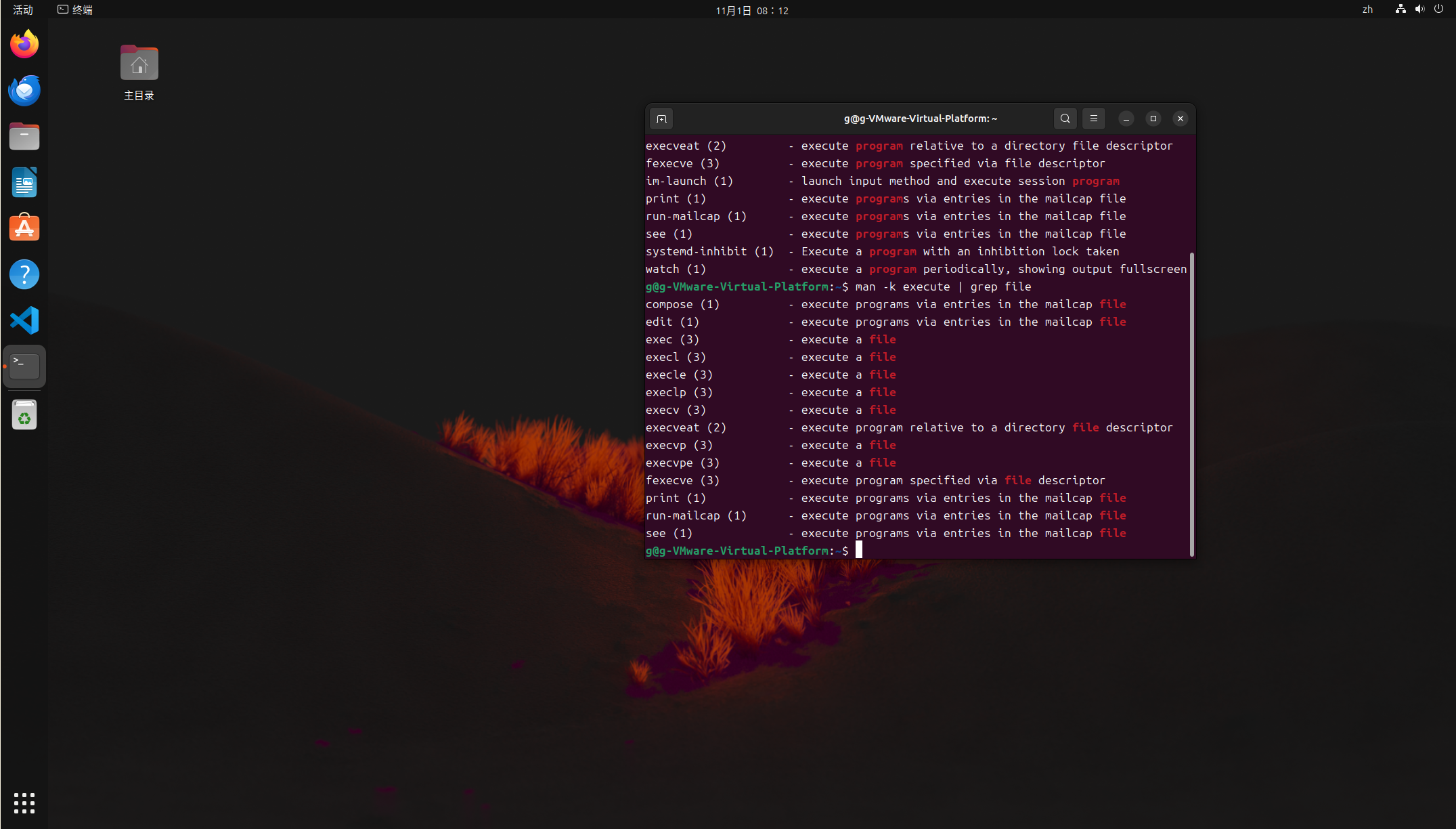
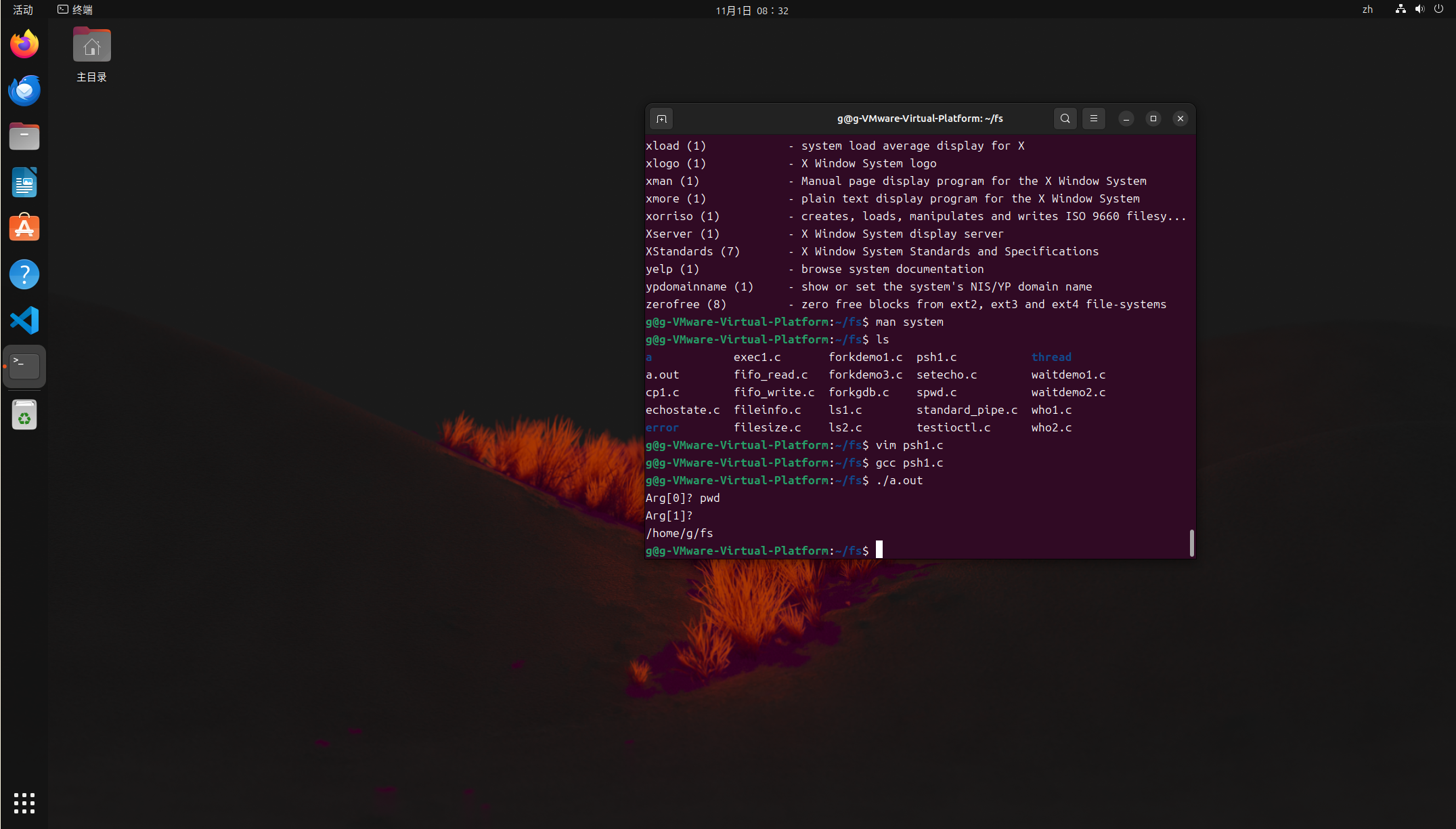


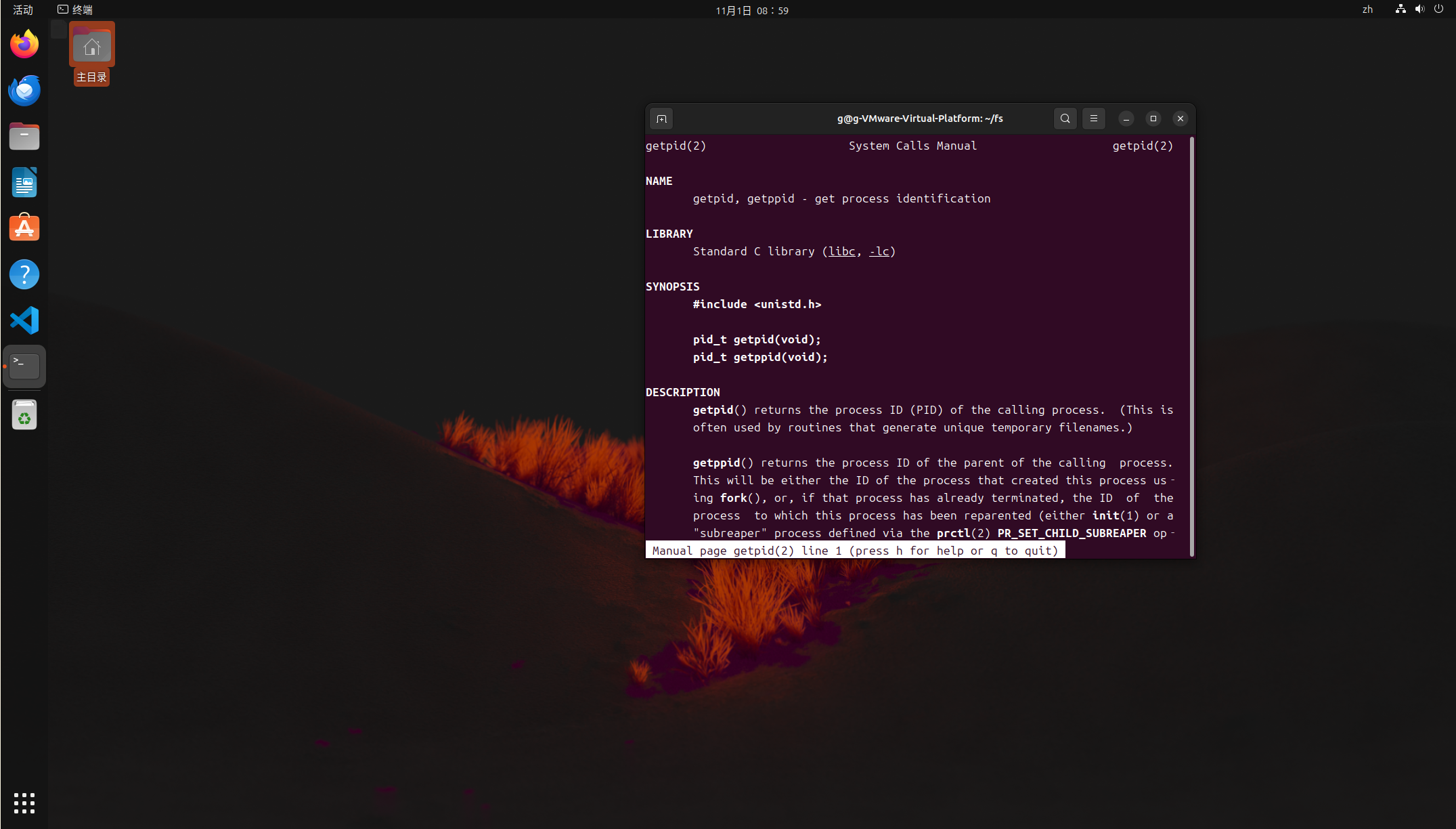
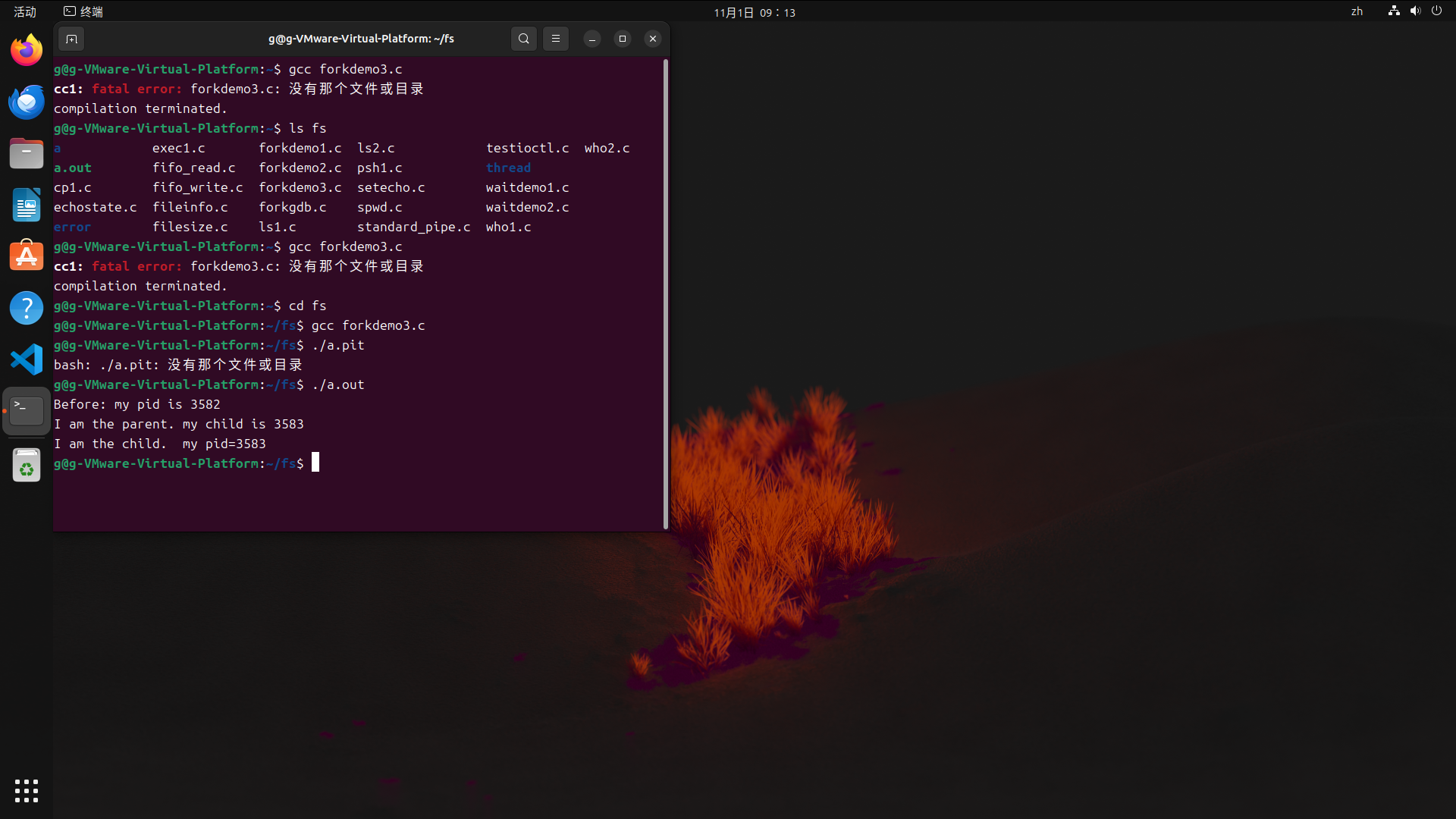
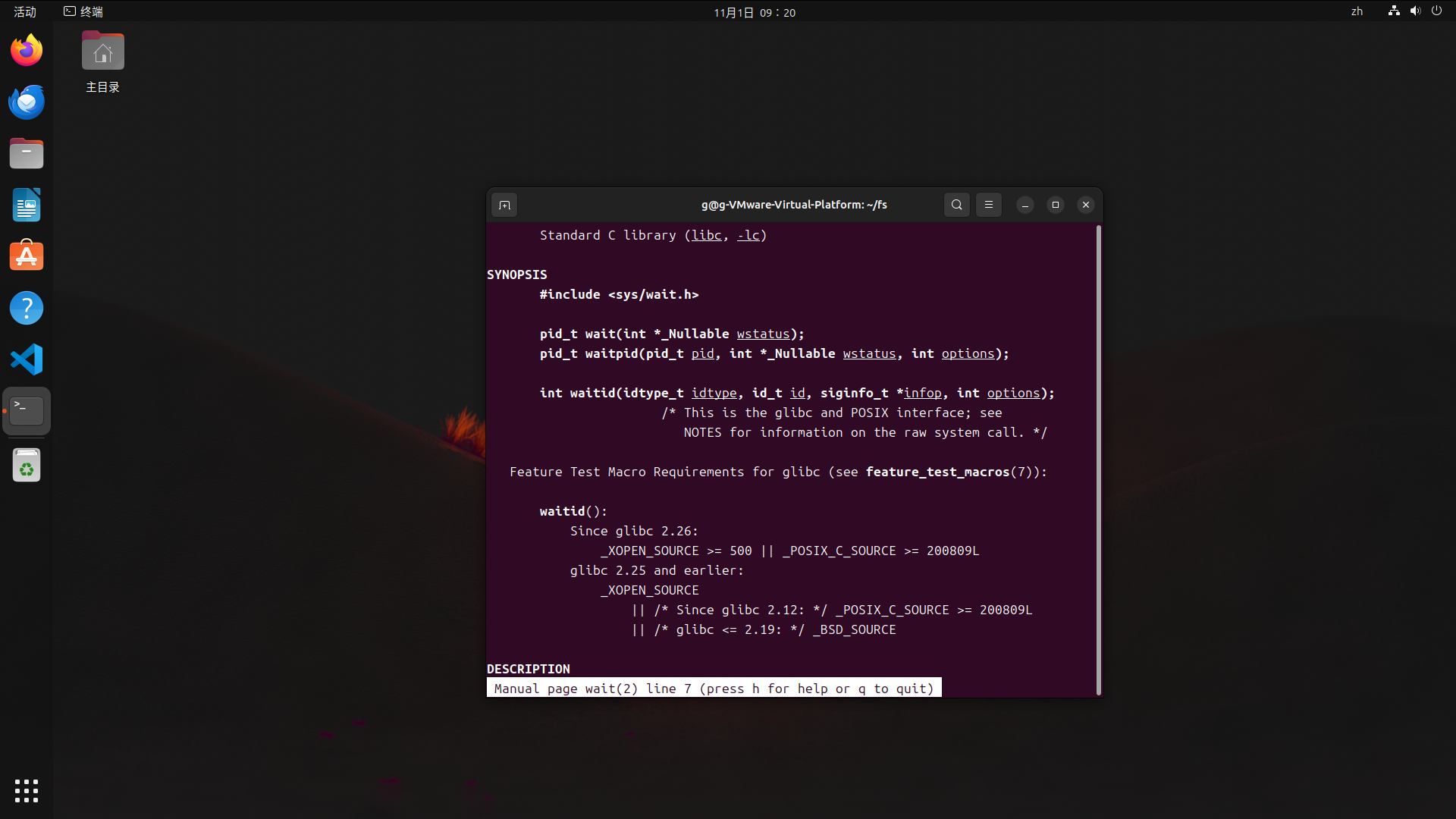





(2)间隔定时器